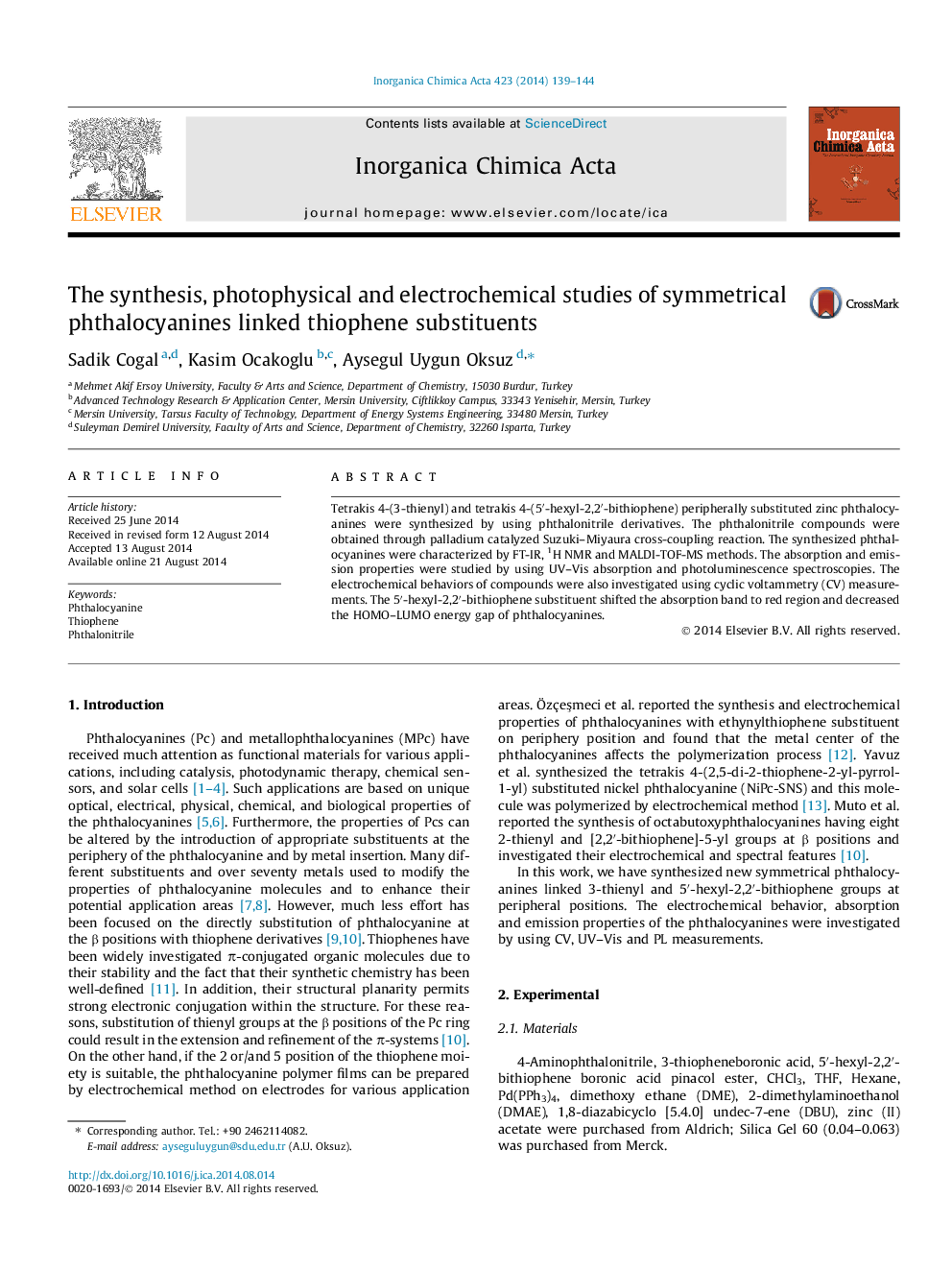| Article ID | Journal | Published Year | Pages | File Type |
|---|---|---|---|---|
| 1309450 | Inorganica Chimica Acta | 2014 | 6 Pages |
•Thiophene substituted phthalocyanines were prepared.•Phthalonitrile derivatives were synthesized using Suzuki–Miyaura cross-coupling reaction.•5′-hexyl-2,2′-bithiophene substituent shifted the absorption band of phthalocyanine to red region.•The effects of different solvents on Q-band absorption were investigated.•The HOMO–LUMO gap decreased upon increasing the conjugation length of phthalocyanine.
Tetrakis 4-(3-thienyl) and tetrakis 4-(5′-hexyl-2,2′-bithiophene) peripherally substituted zinc phthalocyanines were synthesized by using phthalonitrile derivatives. The phthalonitrile compounds were obtained through palladium catalyzed Suzuki–Miyaura cross-coupling reaction. The synthesized phthalocyanines were characterized by FT-IR, 1H NMR and MALDI-TOF-MS methods. The absorption and emission properties were studied by using UV–Vis absorption and photoluminescence spectroscopies. The electrochemical behaviors of compounds were also investigated using cyclic voltammetry (CV) measurements. The 5′-hexyl-2,2′-bithiophene substituent shifted the absorption band to red region and decreased the HOMO–LUMO energy gap of phthalocyanines.
Graphical abstractThe synthesis of symmetrical zinc phthalocyanines was illustrated in the Graphical Abstract. The phthalonitrile compounds were obtained by using Suzuki–Miyaura cross-coupling reaction of 4-iodophthalonitrile with 3-thienylboronic acid and 5′-Hexyl-2,2′-bithiophene-5-boronic acid pinacol ester, respectively. The zinc phthalocyanines were synthesized by cyclotetramerization of phthalonitrile derivatives in 2-dimethylaminoethanol and zinc (II) acetate solution.Figure optionsDownload full-size imageDownload as PowerPoint slide
